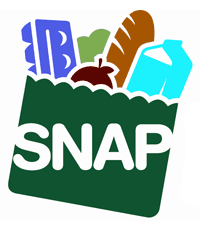A Short SNAP History Lesson
Well, the more I dig into this challenge, the deeper I find I need to dig in order to understand this truly HUMONGOUS issue. Of course, if the solution was a simple one the problem would have already been fixed, right? But it isn’t fixed, and there’s no need to dance around the barn about that fact. My mama always told me that the key to understanding lies in educating oneself about the issue. Thanks, mom!
A Very Brief History of Food Stamps (ala Dancing with the SNAP)
Waltzing into Existence
Do a Google search for “history of food stamps”, and you’ll get over 300,000 hits. Like I said, it’s complicated. There isn’t even complete agreement about whose idea it was in the first place. Most people seem to credit then Secretary of Agriculture Henry Wallace, although a few suggest Milo Perkins, the program’s first administrator with the initial spark.
The program started on May 16, 1939, and the first recipient was one Mabel McFiggin of Rochester, New York. Actual stamps were used, with orange stamps being bought for $1 and half that amount then being given in blue stamps that could be used to purchase surplus food. The idea was to get surpluses from the farmers to hungry city folks. Over the course of its four year history the program is credited with serving 20 million people at a cost of $262 million. The program ceased after unemployment and unmarketable farm surpluses were sufficiently reduced.
Trying to Tango
As best I can tell, what happened next was a whole lot of study, subsequent reporting, and the introduction of legislation. Finally, after one administration (Eisenhower) was given authority to implement a program but did nothing, John F. Kennedy’s first executive order called for expanded food distribution and shortly afterward announced food stamp pilot programs where purchase of stamps was still required but there were no special stamps limited to surplus foods. The first purchase was a can of pork and beans in West Virginia. Of course, the program was not without controversy, and the proposed size and scope sent alarm bells ringing throughout the halls of Congress.
President Lyndon Johnson continued the plan, calling for legislation to make the program permanent and on April 17, 1964, Agriculture Secretary Orville Freeman submitted legislation that would soon be passed. Appropriations for the first year were $75 million, and by year three the figure was $200 million. Some important restrictions were included in the new program including prohibitions on alcoholic beverages and imported foods. The House version of the bill prohibited soft drink, luxury food, and luxury frozen food purchases (no TV dinners for the poor, thank you very much). The program grew like Jack’s bean plant.
The Subsidized Salsa
There were many changes and expansions in the early 1970s, even allowing residents of Guam, the Virgin Islands, and Puerto Rico to participate. Other legislation standardized work requirements and eligibility, as well as the amount the Federal government would bear of the states’ costs (50%). In July 1974, the program had almost 14 million participants. Reform was proposed in 1977. Efforts were made to reach more people in need, reduce fraud, streamline operations, and eliminate the purchase requirement (EPR). When the EPR was instituted in 1979, participation that month jumped by 1.5 million recipients. By December 1979, participation surpassed 20 million.
Time to do the Two Step (or two steps back, one step forward)
The decade of the ‘80s saw cutbacks to the program. The first EBT (Electronic Benefits Transfer) took place in 1984 in Reading, Pennsylvania. By 1985 and 1987 incremental increases occurred as legislators recognized the reality of hunger in America. Nutrition education was expanded, eligibility was extended to the homeless, sales tax was eliminated on food stamp purchases, and increased penalties for fraud were included. Two important pieces of legislation were the Hunger Prevention Act of 1988 and the Mickey Leland Memorial Domestic Hunger Act of 1990.
Twist and Shout (while the two step continues)
Increases in support and budget continued in the early 1990s, and in March 1994 there were a record 28 million participants. Enter the era of Welfare Reform and the Personal Responsibility and Work Opportunities Reconciliation Act of 1996 and a new block grant to states called TANF (Temporary Assistance to Needy Families). Changes continued into the new century, and all states were required to implement EBT before October 1, 2002. Changes continue to be made, and the food stamp program that no longer uses stamps is referred to as SNAP–Supplement Nutrition Assistance Program. Before the end of 2009, a New York Times article estimated that one in eight Americans and one in four children were using food stamps. The number of participants reached an all-time high in February 2010 at 39.68 million people. That means almost every American knows someone on food stamps.
State of the Pantry
Today there were no family food purchases. I did have a business networking trip to Starbucks, so I purchased a beverage and dessert for two people and redeemed an empty coffee bag for my beverage, totaling just over $6. I am considering this a necessary business expense. Unfortunately, there was again some food waste, as I discovered the two leftover ears of corn under the lettuce had gone bad. Shame on me.
Website(s) of the Day
For today I’m simply listing several websites where you can go to learn more about the history of food assistance in the United States. Take my mother’s advice and learn all that you can because tomorrow I’ll be asking some questions that inquiring minds want to know.
http://en.wikipedia.org/wiki/Supplemental_Nutrition_Assistance_Program
http://www.cbpp.org/cms/index.cfm?fa=view&id=1274 (This site includes a video).
http://www.fns.usda.gov/snap/snap.htm
http://www.frac.org/html/federal_food_programs/programs/fsp.html
http://www.time.com/time/nation/article/0,8599,1921992,00.html
http://www.nytimes.com/interactive/2010/02/11/us/FOODSTAMPS.html




Leave a Reply